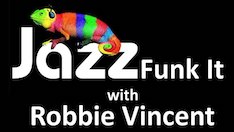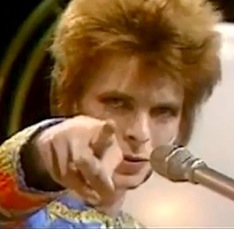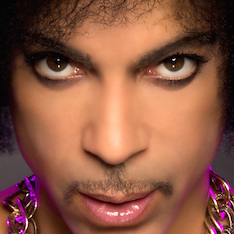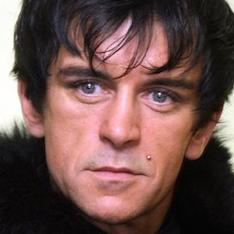➤ Ure and Kemp spill the odd bean about the sensitive egos involved in Band Aid

The Band Aid band, Nov 25, 1984: most of the pop stars who performed, plus artist Peter Blake who created the record sleeve for Do They Know It’s Christmas?
◼ 47 POP STARS SPENT ONE SUNDAY IN LONDON recording the song that became, for 13 years, the biggest selling UK single of all time. Do They Know It’s Christmas? was released four days later on Nov 29, 1984, stayed at No 1 for five weeks, sold over three million copies and raised significant funds for famine relief in Africa. The project lead naturally the next year to Live Aid, the biggest global rock concert ever, viewed by two billion people in 60 countries, who coughed up still more dollars. It is estimated that Live Aid raised £150m (about $283m).
The idea for Band Aid was proposed by one man, Bob Geldof, since granted an honorary knighthood but in 1984 a musician down on his luck, who enlisted the much more successful go-getter, Ultravox’s Midge Ure (who remains unknighted for no good reason), to bring the dream to fruition as its producer.
The pair created a megagroup by recruiting 45 of the biggest hitters in British music, which that year included Spandau Ballet. Recent books by Ure and Spandau’s Gary Kemp provide entertaining and detailed accounts of the Band Aid venture, spiced with the frankness that comes from hindsight. These short extracts give the flavour…
 From Midge Ure’s autobiography,
From Midge Ure’s autobiography,
If I Was… (Virgin Books, 2005):
“Did you see that report about the famine in Ethiopia on the telly last night?” I confessed I hadn’t. “It’s just horrific.” Bob went on in great detail about how he wanted to do something about it, and ended up saying, “I want to do something to raise some money for Ethiopia. Will you help?”
“Count me in,” I said, knowing you don’t say No to Bob. I’ll ring you tomorrow when I’m back in London” …
[The pair met for lunch at Langan’s Brasserie to discuss “a bunch of bizarre schemes” before concluding that the only thing they could do was make a record. They then spent some time bickering over who was going to write the song. Midge maintained he was up to his neck, Bob waffled on but was reticent to offer himself.]
Ure continues:
What I didn’t realise was that it was Bob’s confidence that was way down, not mine. When [his band] the Boomtown Rats were in their heyday he’d have written the song himself and harassed all his friends for money. But in 1984 the guys having the hits were Sting, Duran Duran, Paul Young, Spandau … and me. Not Bob. His career was in the sewers and the Rats were broke. It’s impossible to imagine now, but he was too embarrassed to call up Sting and ask him to help. Sting, being Sting, would have said Yes without a moment’s hesitation, but at that time Bob didn’t believe in himself enough to even pick up the phone.
I was the first person he spoke to and because we were friends he wasn’t embarrassed. Of course, I didn’t know any of this for years. Artists don’t confess weakness and self-doubt to other artists, even if they are mates. As Bob puts it (with added obscenities), I kicked him up the backside when I told him, “You are a songwriter, just write a song.” I was his backstop, his credibility; once I’d agreed to write with him he could tell people, “Midge and I are writing the song together.”
➢ Nov 25, 1984: On this day, pop made its noblest gesture but the 80s ceased to swing
As Bob was broke I paid for lunch. The moment we left the restaurant he went into overdrive. He phoned Sting, who said Yes, then he left his house in Chelsea and walked up Flood Street to the King’s Road to look in the window of the Pushkin Gallery. He saw Gary Kemp inside, collared him and soon Spandau were primed and ready to go. By now he was a man on a mission. His next stop was to be the Picasso Bar, where quite a few musicians hung out, and there was Simon Le Bon walking down the street towards him. He told Simon about the record. “Midge is writing the song. I’ve just seen Kemp, they’re in. Sting’s said Yes.”
Simon was a bit taken aback as Duran were due to play some dates in Europe, but quickly agreed they would be back for the recording. That night Bob bumped into Martin Kemp at a party. The word was out and soon people were calling Geldof. We had artists but what we didn’t have was anything close to a song.
When I got back home I didn’t go out to the studio. Instead I sat at the kitchen table with a little Casio keyboard, just messing around, thinking “Christmas”. I came up with this bell sound, a little third harmony part that made it sound familiar and added a touch of Jingle Bells. I played it really slowly on my little portable keyboard, recorded it and messengered the tape round to Bob…
Text © Midge Ure
Gary Kemp takes over the story…
Gary Kemp felt Geldof was talking pie-in-the-sky. “Not only did we all hate each other in this business but the logistics of coordinating these fearful egos would be impossible.” He was on tour in Japan with Spandau Ballet during November 1984 when Geldof rang. Kemp was stunned to be told a song was ready for the dozens of stars lining up “next Sunday at Sarm West Studios” and Geldof wanted a Christmas number one …

Sarm Studios, Sunday of the Band Aid recording: Spandau Ballet and Duran Duran arrive after taking separate private jets from Germany
 Extracted from Gary Kemp’s autobiography,
Extracted from Gary Kemp’s autobiography,
I Know This Much (4th Estate, 2010):
I knew we were flying to Germany from Japan, and the night before the recording we’d be doing a TV show there with our old adversaries from Birmingham [Duran Duran]. There’d be a hangover, but of course we’d do it. “Definitely.”
Flying out of Japan, there was only one thing we spoke about and it wasn’t being part of Bob’s Band Aid. We were to meet our opposition and spend an evening together with them. Tommy’s Pop Show was a biannual event and huge in Germany; if you got it, you did it, and this November it was to be Spandau Ballet and Duran Duran. Given our great media-driven rivalry and similar origins it was extraordinary that we hadn’t met each other since the night [in 1980] we’d played Birmingham’s Botanical Gardens and, on the floor of the promoter’s flat, dismissed them. Now, putting music and chart successes aside, what we were all keen to prove was who could party the hardest. But our respective managements, seeing our horns appearing, were worried about the early start in the morning as both bands had to get back to London to record Geldof’s charity single, and so after the show we were all grounded in the hotel bar. Nevertheless, there were things that could still be done there.
I guess the point of this post-show head to head was to stay up and stay standing. Unfortunately John Keeble, our star player, went bonkers on Jack Daniel’s and was stretchered off in the first five minutes. “The boy was overenthusiastic,” someone said respectfully, as one of our minders pulled him from the wreckage and away to his room. We could only watch gobsmacked: with no substitutes allowed on, we were already one man down and the Twiglets hadn’t even arrived.
We were sort of pairing up now, sparring, like for like, pound for pound, mano-a-mano: I was enjoying some wry, arthouse natter with Nick; Tony and Simon discussed humidifiers; Steve and Andy talked at each other excitedly about music; while the two bass players — the so-called best looking bass players of all time — sucked in their cheeks and sized each other up for the long haul.
I’d just returned from such a sojourn to find Nick Rhodes earnestly telling Dagger [Spandau’s manager] something. “We’re gonna need make-up at the other end tomorrow. There’ll be cameras everywhere.”
“Really? I never thought of that.” Dagger looked around at the remains of his band. “Yeah, I guess you’re right.”
“I know a girl who can do it,” said Nick, with a hint of authority. “She can meet us at the airport. We’ll split the costs if you like.”
People were sent off to find her number and phone her, but she was out.
“Forget the blusher, what we’re gonna need, Nick, is security.” It was my turn to have the superior knowledge. “My mum says it’s been all over Radio 1 that we’re flying in together.”
“No, you’re right,” Nick conceded, but then topped me: “Our office has organised something already.”
That something was the Metropolitan Police and the security services of Heathrow Airport. The next morning, while they waited at Heathrow, both bands boarded two private jets in Munich that would take them to make a record for a country of starving people.
“Faster! Can’t you go faster? I can see their plane up ahead.”
“Shut up, Tone, I think I’m gonna be sick.”
Even airborne, it was important to win.
Our arrival at Heathrow left us all a tad embarrassed. There, primed on the tarmac, were the Met, the airport security and the limos, but not only was there no make up artist to greet us, there were no fans either.
The Duran lot climbed disappointedly into their pre-warmed cars. “Race ya!”
“Oh, give it a rest.”
“Where is everyone? I thought this was gonna be something.”
Why hadn’t anyone come to see Duran and Spandau turn up at the airport together? Had we suddenly gone out of fashion since leaving the country? And then it dawned on us — because they were all at Sarm Studios, waiting for the entire charts to turn up.
“Steve, this is all wrong. Why are we in a Queen’s car for this? It doesn’t look good.”
“I’m sorry, the record company sent them. It’s what we usually have.”
As we approached the waiting crowds outside Sarm, it occurred to me that the black Daimler Princess we were riding in did not strike quite the right tone of humility for such an event as the recording of a song highlighting the starvation of a nation.
We pulled up and one of our minders opened the car door. Suddenly, as I climbed out, my embarrassment was multiplied. There, coming up the road with a rolled copy of The Observer placed ornamentally under his arm, looking for all the world as though he was casually walking to work, was Sting.
“Bollocks.”
“He’s been dropped off by his limo driver around the corner, I betcha.”
“Trust him to get it right.”
Text © Gary Kemp
❏ Above: The Band Aid Story is a 1984 TV documentary interviewing the participants about the making of the charity Christmas single.













